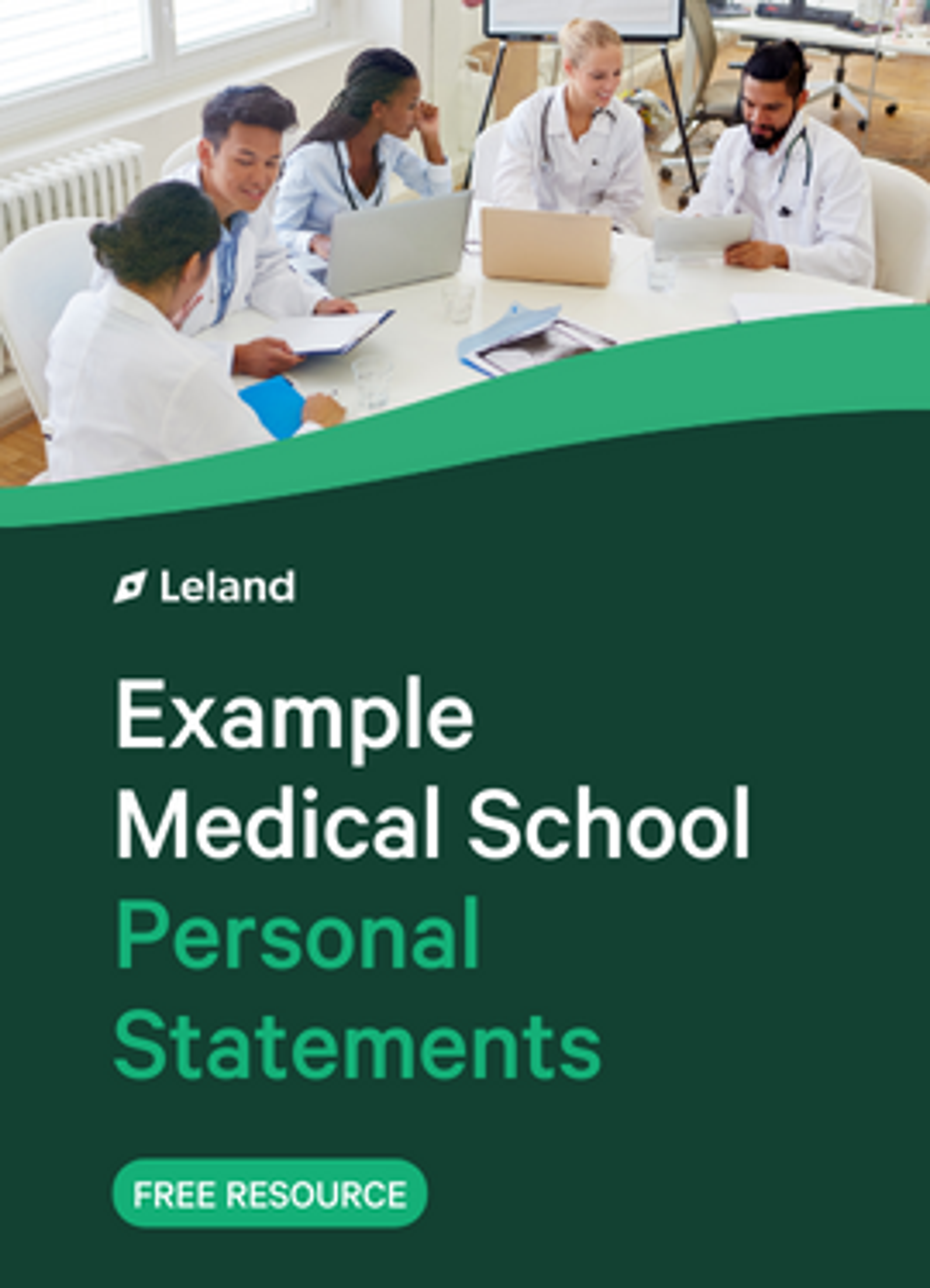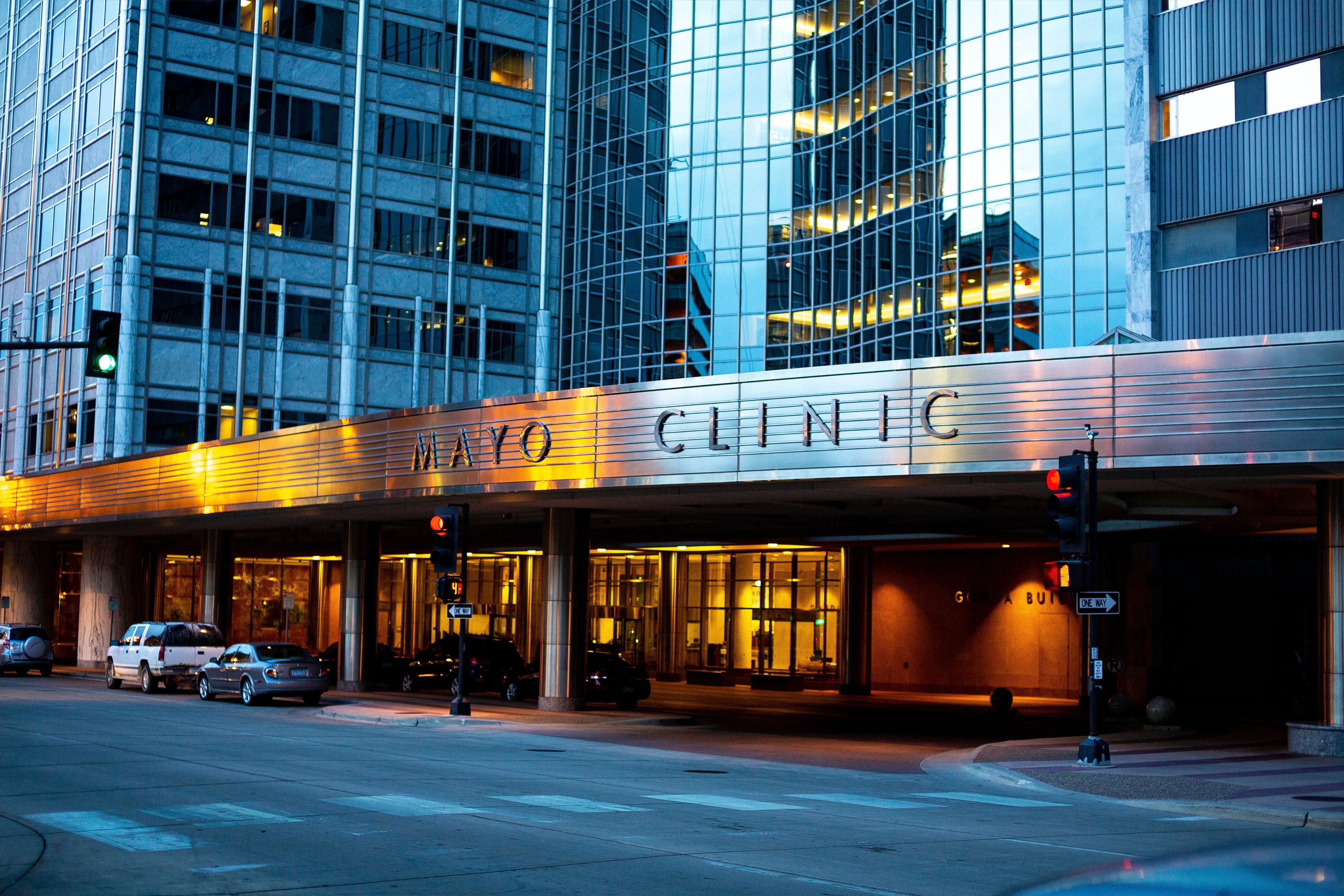The 20 Best Medical Schools in the US (T20): Acceptance Rates, MCAT Scores, & GPA
Looking to pursue a career in medicine? Explore our comprehensive guide to the top 20 medical schools in the U.S., complete with class profile info, rankings like average test scores and GPAs, deadlines, and more!
Posted March 6, 2025

Table of Contents
Are you considering a career in medicine and looking for the best medical schools in the country? If so, you might have come across the term "T20 medical schools." This is the designation for the top 20 medical schools in the United States, offering world-class education and training for aspiring doctors. In this article, we will provide a comprehensive guide to T20 medical schools, covering everything you need to know about these programs, from admission requirements to alumni networks, class profiles, and more.
What Are the T20 Medical Schools?
T20 medical schools refer to the top 20 medical schools in the United States, based on various ranking systems, including the U.S. News and World Report. These top-ranked medical schools are known for their excellence in medical education, scientific research, and clinical practice, and are often considered prestigious amongst a wide variety of groups. Here are schools most often recognized as part of the “T20”:
- Harvard Medical School
- Johns Hopkins University School of Medicine
- University of Pennsylvania Perelman School of Medicine
- Columbia University College of Physicians and Surgeons
- Duke University School of Medicine
- Stanford University School of Medicine
- University of California–San Francisco School of Medicine
- Vanderbilt University School of Medicine
- Washington University School of Medicine
- Cornell University Weill Medical College
- New York University Grossman School of Medicine
- Yale School of Medicine
- Mayo Clinic Alix School of Medicine
- Northwestern University Feinberg School of Medicine
- University of Michigan–Ann Arbor Medical School
- University of Pittsburg School of Medicine
- University of Washington School of Medicine
- Icahn School of Medicine at Mount Sinai
- University of California–Los Angeles David Geffen School of Medicine
- University of Chicago Pritzker School of Medicine
Overview of the 20 Best Medical Schools in the U.S.
The T20 medical schools in the U.S. are known for their rigorous academic programs, high research output, exceptional clinical training opportunities, and strong community engagement. In 2023, these schools include:
1. Harvard Medical School

Founded in 1782, Harvard Medical School (HMS) has a long history of innovation in the medical field. HMS offers broad opportunities for medical students to conduct research and service and to pursue their unique interests in a variety of teaching hospitals and research centers in Boston. As the top medical school in the United States, HMS is highly competitive with an acceptance rate of 3.2% and an average MCAT score of 520.59.
2. Johns Hopkins University School of Medicine
Johns Hopkins University School of Medicine emphasizes a patient-centered approach to medicine and pursues innovative research. Its teaching hospital, the Johns Hopkins Hospital, has consistently ranked as one of the best hospitals in the nation and is the birthplace of several medical specialties, such as neurosurgery, cardiac surgery, and child psychiatry. With an acceptance rate of just 6.3%, admitted students typically have high GPAs and MCAT scores, averaging around 3.92 and 521 respectively.
3. University of Pennsylvania Perelman School of Medicine

Also known as Perelman Med, UPenn's Perelman School of Medicine is the oldest medical school in the United States and the home of major medical advancements, including the development of dermatology and radiology and the creation of the rotavirus vaccine. Perelman Med's curriculum focuses on three themes: Science of Medicine, Technology and Practice of Medicine, and Professionalism and Humanism. The average admitted student has a 3.92 GPA and a 520.8 MCAT score, and Perelman has an acceptance rate of 3.8%.

4. Columbia University College of Physicians and Surgeons
Columbia University's prestigious medical school, also called the Vagelos College of Physicians and Surgeons, takes a "one-size-fits-you" approach to medical education through a wide range of research opportunities, electives, and extracurricular activities. Columbia medical students may study and train in affiliated hospitals in Central New York, Connecticut, and throughout New York City. Admissions are extremely competitive with a 3.9 median GPA, 522 median MCAT score, and a 3.6% acceptance rate.
5. Duke University School of Medicine
Unlike most medical schools, Duke University School of Medicine's curriculum requires medical students to complete their basic science courses in one year rather than one and a half, giving them a head start on clinical clerkships in their second year. Third year students have the unique opportunity to spend 10 to 12 months dedicated to scholarly research and fourth year students can pursue their individual interests through elective rotations. Duke Medicine is one of the most competitive medical schools, with an acceptance rate of just 2.9% and a median MCAT and median GPA of 520 and 3.92 respectively.
6. Stanford University School of Medicine

Tied with Duke University School of Medicine is Stanford University School of Medicine, with an extremely low acceptance rate of 1.4%. Stanford Medicine allows students to choose between 2- and 3-year pre-clerkship options in order to pursue dual degrees, independent research, or other scholarship and leadership activities. Admitted students at this highly competitive institution have a median MCAT score of 518 and median GPA of 3.9.
7. University of California--San Francisco School of Medicine
Also tied with Duke and Stanford at #5 is UCSF School of Medicine , which is the top recipient of NIH funding and the highest ranking public medical school. The M.D. program revolves around seven core competencies: patient care, medical knowledge, practice-based learning and improvement, interpersonal and communication skills, professionalism, systems-based practice, and interprofessional collaboration. UCSF has an acceptance rate of 2.8%, and admitted students have a median GPA of 3.87 and median MCAT score in the 90th percentile (around 515).
8. Vanderbilt University School of Medicine
Another medical school tying in the #5 spot is Vanderbilt University School of Medicine, located in downtown Nashville. The affiliated Vanderbilt University Medical Center holds the record for most heart transplants conducted and houses the largest biomedical informatics department in the nation. Vanderbilt takes a case-based, small group approach to learning for students' first year, with opportunities for personalization in their third and fourth years through elective and away rotations, mentored research projects, acting internships, and integrated science courses. Vanderbilt School of Medicine does not share exact average MCAT scores or GPAs, but the 2021 entering class ranged from the 74th to 100th percentile (about 508 to 528) and 3.5 to 4.0, respectively, and the school's acceptance rate is 4.5%.
9. Washington University School of Medicine

The last school tying in the #5 spot is Washington University School of Medicine (WUSM) in St. Louis, Missouri. Admitted students have an GPA of 3.88 and a 519.5 MCAT score. Despite its competitive acceptance rate of 7.5%, WUSM is known for its collaborative learning environment. Students passionate about medical research can pursue their interests at a variety of research centers, including the prestigious McDonnell Genome Institute, which contributed 25% of the finished sequence to the Human Genome Project.
10. Cornell University Weill Medical College
Located in New York City, Weill Cornell Medicine is affiliated with several hospitals and medical centers in the city, as well as Houston Methodist Hospital and a campus in Qatar. Weill's curriculum centers around the themes of the scientific basis of medicine, patient care, and physicianship, and students can also choose the Tri-Institutional M.D.-Ph.D. program offered in conjunction with Rockefeller University and Sloan Kettering Institute. Starting in 2019, Weill has offered need-based financial aid through grants, ensuring that all students who qualify for financial aid can meet costs of attendance without debt, making it an attractive option for low-income and first-generation medical students. With an acceptance rate of 3.4%, Weill's admitted students have a median GPA of 3.91 and median MCAT score of 519.

Example Medical School Personal Statements
Read the personal statements that got these applicants accepted to programs like Stanford School of Medicine and Harvard Medical School.
11. New York University Grossman School of Medicine
Tied with Cornell is NYU Grossman School of Medicine, which offers extensive full-tuition scholarships to all admitted students. NYU Grossman is the birthplace of several major medical advancements, such as the creation of the first outpatient clinic in the United States and the development of the polio vaccine. Due to its generous financial aid and excellent medical education, NYU Grossman is extremely competitive with an acceptance rate of just 2.7%, and the median GPA and MCAT score are 3.97 and 523 respectively.
12. Yale School of Medicine
Another medical school tying in the #10 spot is Yale School of Medicine. Known as the Yale System of Medical Education, Yale School of Medicine's unique approach to medical education promotes independent learning and collaboration between students. Yale's low acceptance rate of 5.7% means admitted students have a high median GPA and MCAT score, at 3.9 and 521 respectively.
13. Mayo Clinic Alix School of Medicine
Located in Rochester, Minnesota, Mayo Clinic Alix School of Medicine (MCASOM) has a unique culture that includes "Mayo wear" and no white coat ceremony. First-year students are also assigned a "MedSib family," which provides peer mentoring and support as they navigate the transition into medical school. Students may also choose to train at the Jacksonville or Scottsdale campuses or opt for one of MCASOM's almost 200 academic enrichment opportunities. With a 4.5% acceptance rate, MCASOM's first-year class of 2023 had a median GPA of 3.94 and MCAT score of 521.

14. Northwestern University Feinberg School of Medicine
Tied with MCASOM in the #13 spot, Northwestern University Feinberg School of Medicine offers extensive opportunities for community engagement, student-driven research, and study abroad programs. Feinberg accepts 4.9% of applicants, and its entering class of 2023 had a median MCAT score of 520 and a median GPA of 3.92.
15. University of Michigan--Ann Arbor Medical School
UMich's medical school, also known as Michigan Medicine, is another school tying at #13. Unlike most medical schools, Michigan Medicine allows students to begin patient interactions in their first year, helping students get a head start on clinical experience. The average UMich medical student scored in the 91.07th percentile on the MCAT (around 515-516) and has a GPA of 3.84. With an acceptance rate of 3.6%, Michigan Medicine is highly competitive, but has a preference for in-state applicants.
16. University of Pittsburg School of Medicine
Another school tying at #13 is the School of Medicine at University of Pittsburg, also known as Pitt Med, which emphasizes creativity, compassion, and leadership throughout its curriculum. Students are encouraged to foster long-term relationships with faculty, community partner organizations, and individual patients. As a public medical school, the Pitt Med admissions process is more favorable towards Pennsylvania residents, but it is still highly competitive, accepting just 4.2% of applicants. The 2023 entering class had a 3.79 median GPA and a median MCAT score of 514.
17. University of Washington School of Medicine
Another public medical school in the #13 spot is the University of Washington School of Medicine, or UW Medicine, which is also the highest ranked medical school for primary care. As part of the WWAMI (Washington, Wyoming, Alaska, Montana, and Idaho) partnership, UW medical students may train at a variety of medical schools and centers throughout the five states to address the shortage of doctors in rural areas. Residents of the WWAMI states are also given preference in admissions, making up 96% of admitted students. However, with an acceptance rate of 4.5%, UW Medicine is still highly competitive. While it does not share specific admissions statistics, its students have a median GPA between 3.8 and 4.0 and a median MCAT score between 514 and 517.
18. Icahn School of Medicine at Mount Sinai
Beside New York City's iconic Central Park is Icahn School of Medicine at Mount Sinai, or simply Mount Sinai, the medical school of the largest healthcare system in the city. Unlike most medical schools, Mount Sinai offers early assurance through the FlexMed program, which allows college sophomores to apply without having to take the MCAT, then matriculate into medical school after graduating with their bachelors' degrees. Mount Sinai does not share the MCAT scores or GPAs of their entering class, but with a 3.4% acceptance rate, applicants will need competitive statistics.
19. University of California--Los Angeles David Geffen School of Medicine

Tied with Mount Sinai at #18 is the David Geffen School of Medicine (DGSOM) at UCLA, which offers multiple pre-medical, pre-health, and post-baccalaureate programs to help prospective applicants. DGSOM recently redesigned its curriculum to provide earlier opportunities for clinical experience and a stronger focus on ethics, social justice, and health equity. With an acceptance rate of 2.9%, DGSOM is highly competitive, but with a preference for in-state applicants as a public medical school. The average MCAT score of admitted students was 514 in the last reported year of 2021 and the average GPA was 3.66 in 2019, but it is important to keep in mind that admissions have only become more competitive in recent years.
20. University of Chicago Pritzker School of Medicine
The last medical school in the T20, also tied at #18, is the Pritzker School of Medicine at the University of Chicago, the first medical school to hold a white coat ceremony. Pritzker has a strong emphasis on research and community service, with a required scholarly project and 90% of students participating in its six free clinics. Pritzker is highly competitive with a 3.2% acceptance rate, and its entering class of 2023 had a median GPA of 3.91 and MCAT score of 521.
Admission Requirements for T20 Medical Schools
Admission to T20 medical schools is highly competitive, and applicants are required to meet strict academic standards and demonstrate their passion for medicine. Typically, admission committees will consider your:
- Academic record
- Standardized test scores (such as the MCAT)
- Letters of recommendation
- Personal statement
- Interview performance
- Secondary essays
In addition to the academic requirements, T20 medical schools also value extracurricular activities and community service and involvement. Applicants who have volunteered in healthcare settings, participated in medical research, or held leadership positions in student organizations may have an advantage in the admissions process. It is important to showcase your unique experiences and skills in your application to stand out among the highly competitive pool of applicants.
Read:
- The Ultimate Guide to the Medical School Application Process
- How to Write a Powerful Personal Statement for Medical School
- How Many Medical Schools Should I Apply To? A Strategic Approach
- The Ideal Number of Volunteer Hours for Medical School Applications
- Mastering Medical School Interviews: Questions and Strategies
The Benefits of Attending a T20
- Quality of Education: T20 medical schools typically have renowned faculty members who are experts in their fields. They work hard to provide high-quality education and training, ensuring that students receive a strong foundation in medical knowledge and skills.
- Research Opportunities: These prestigious medical schools often have robust research programs. Students at the best med schools have the chance to work on cutting-edge medical research, contribute to scientific advancements, and potentially get published in respected journals.
- Clinical Training: T20 medical schools often have access to some of the best hospitals and healthcare facilities. This allows students to gain valuable clinical experience and exposure to a diverse range of medical cases
- Networking Opportunities: Attending a T20 medical school means being surrounded by high-achieving peers and faculty. Building connections with such a network can open doors to various opportunities throughout a student's career.
- Reputation and Prestige: The reputation of T20 medical schools can positively impact a graduate's professional life. It may lead to academic achievements and increased recognition and respect from employers, patients, and colleagues.
- Access to Resources: These medical schools typically offer state-of-the-art facilities, libraries, and other resources that enhance the learning experience and medical degree.
- Residency Placement: T20 medical schools often have strong connections with top residency programs. Graduating from such an institution may increase the likelihood of securing a competitive residency position.
- Mentorship and Guidance: With top-tier faculty, students can benefit from valuable mentorship and career guidance, helping them make informed decisions about their medical career paths.
- Exposure to Diversity: T20 medical schools often attract a diverse group of students from various backgrounds, fostering a multicultural and enriching learning environment.
- Opportunities for Specialization: These schools may offer a broader range of medical specialties and subspecialties, allowing students to explore various areas of interest.
Potential Cons of Attending a T20
Cost
T20 universities are often prestigious private institutions with higher tuition fees compared to public universities or lower-ranked private colleges. The cost of attendance, including tuition, fees, housing, and other expenses, can be substantial and may lead to significant student debt.
Large Class Sizes
Some T20 universities have large student populations, which can result in large class sizes. This may lead to less individual attention from professors and teaching assistants, making it harder to engage in meaningful discussions in classes or get personalized academic support.
High-Stress Environment
The competitive nature of T20 universities and the desire to excel can create a high-stress environment. This stress may affect students' mental health and well-being.
Impersonal Learning Environment
With large class sizes and a focus on research, some T20 universities may prioritize faculty research over teaching. As a result, some professors may be less accessible to students outside of the classroom.
Overemphasis on Brand Name
Attending a T20 university is prestigious, but it's essential to remember that the brand name alone of a great school doesn't guarantee success. Your personal dedication, work ethic, and passion for your field of study matter just as much.
How to Choose the Right T20 (or Other) Medical School for You
When selecting the right medical school for your needs, consider your academic interests, career goals, and personal preferences. Research the schools’ curriculum, research opportunities, clinical training, and student life to determine which school aligns best with your interests. Be sure to visit the schools, attend information sessions, and talk to current students to get a sense of the best medical school here's culture.
Another important factor to consider when choosing a T20 medical school is the location. Do you prefer a school in a bustling city or a quieter suburban area? Do you want to be close to family or are you willing to move across the country? Location can greatly impact your overall experience and should be taken into account when making your decision.
It's also important to consider the school's resources and support systems. Does the school offer tutoring or academic support for students who may be struggling? Are there opportunities for mentorship or networking with alumni? These resources can greatly enhance your education and help you succeed in your future career.
Campus Life and Facilities
T20 med schools offer world-class facilities, including modern labs, advanced simulation centers, and state-of-the-art hospitals. These facilities provide students with hands-on training and research opportunities, as well as access to cutting-edge medical technology and equipment. Most T20 medical schools also have a vibrant campus life, with various student organizations, cultural events, and recreational activities to participate in.
Curriculum and Coursework
The curriculum in T20 medical schools is designed to provide students with a solid foundation in basic sciences and clinical practices, as well as exposure to cutting-edge research and the latest medical technologies. The coursework in these schools is rigorous and demanding, requiring students to study a range of topics from anatomy and physiology to pharmacology and medical ethics. Students also have opportunities to engage in elective courses and research projects to pursue their specific interests.
One unique aspect of the curriculum in T20 medical schools is the emphasis on inter-professional education. Students are encouraged to work collaboratively with other healthcare professionals, such as nurses, pharmacists, and physical therapists, to provide comprehensive patient care. This approach helps students develop strong communication and teamwork skills, which are essential in the healthcare field.
Faculty and Research Opportunities
The faculty in T20 medical schools is composed of world-renowned experts in a plethora of medical specialties, including basic research, clinical practice, and public health. These faculty members provide students with mentorship, guidance, and expert knowledge in their fields. T20 medical schools also offer numerous research opportunities for students, including summer fellowships, research assistantships, and participation in ongoing research projects.
Moreover, T20 medical schools have partnerships with leading hospitals and healthcare organizations, providing students with access to real-world clinical experiences. For instance, UCSF partners with MarinHealth to provide clinical service to residents in the surrounding San Francisco Bay Area. These types of partnerships allow students to work alongside experienced healthcare professionals, gaining valuable hands-on experience and developing their clinical skills. These partnerships also allow for collaboration between medical professionals and researchers, leading to advancements in medical knowledge and treatment.
Student Support Services in T20 Medical Schools
Medical school can be challenging, and T20 medical schools offer strong support services to help students succeed academically and emotionally. These services include academic advising, coaching and counseling, health and wellness programs, and career services. Students are encouraged to take advantage of these services to ensure that they complete their degree successfully.
Cost of Attendance
Attending a T20 medical school can be costly, with tuition and fees ranging from $50,000 to $70,000 per year. However, most schools offer various financial aid options, including scholarships, grants, loans, and work-study programs, to help students finance their education. It is essential to explore your financial aid options and plan your budget carefully to avoid any financial hardship during your medical school years.
Key Takeaways
- T20 medical schools are the best medical schools in the United States, offering exceptional education, research, and clinical training opportunities.
- Attending a T20 medical school can be challenging, but it can also be immensely rewarding, providing you with the knowledge, skills, and connections necessary for a successful career in medicine.
- When choosing medical schools to apply to, consider your individual strengths and interests and how they align with each school's mission and focus areas.
Get Into Your Dream Medical School With the Help of a Coach
Need one-on-one advice to strengthen your application? Work with a Leland coach who specializes in law school admissions to craft a standout personal statement, prepare for interviews, and more. View top-rated law school coaches here.












